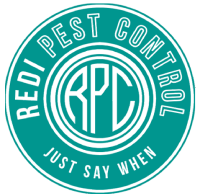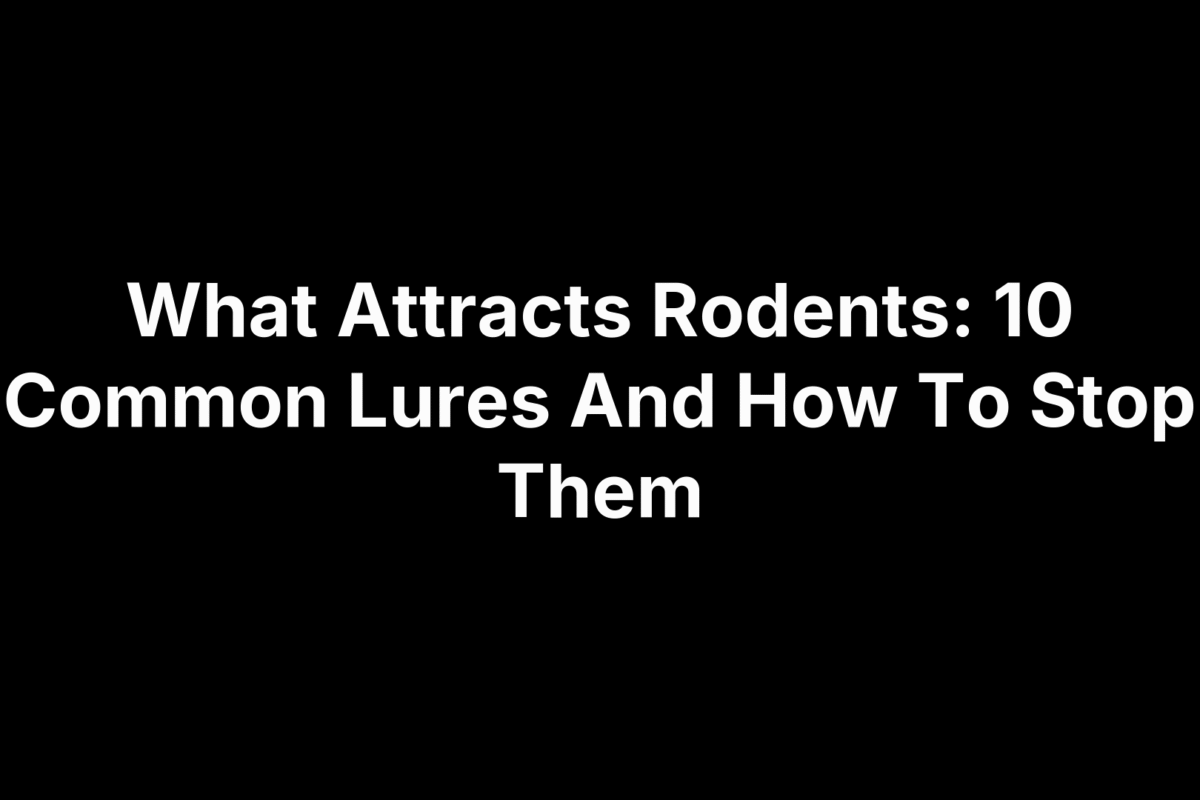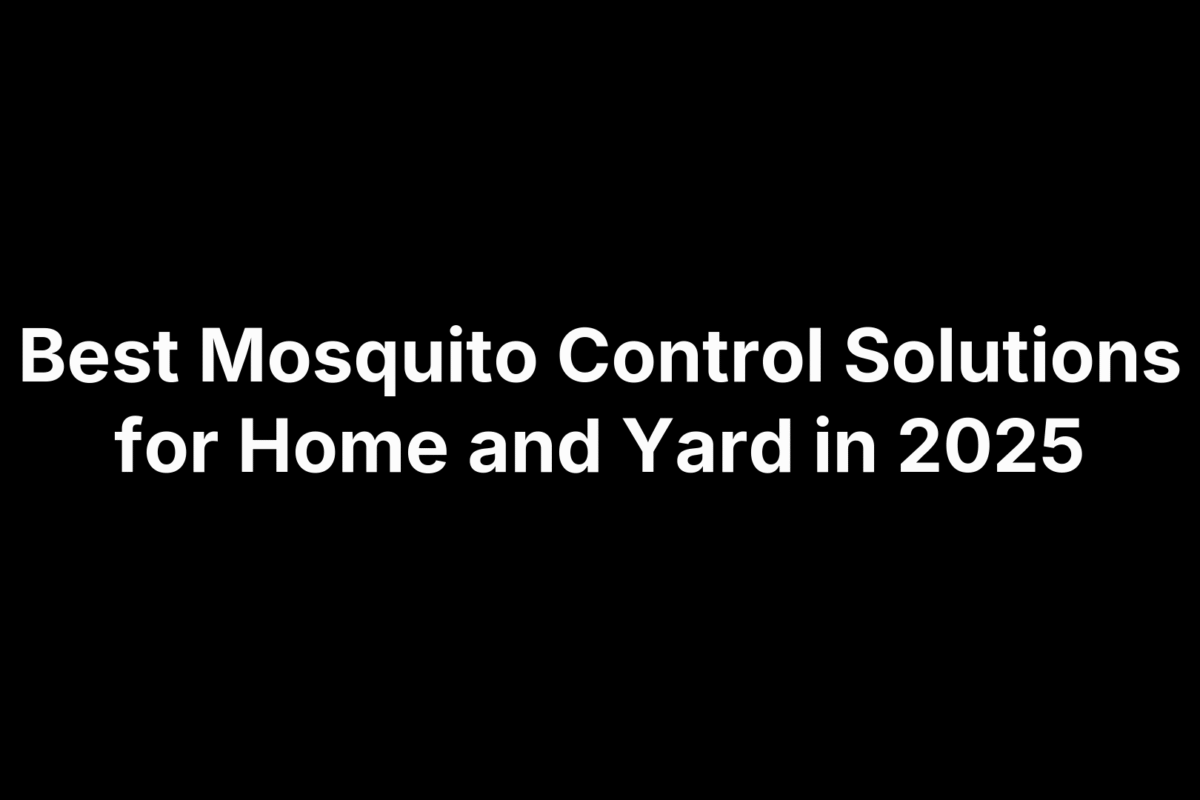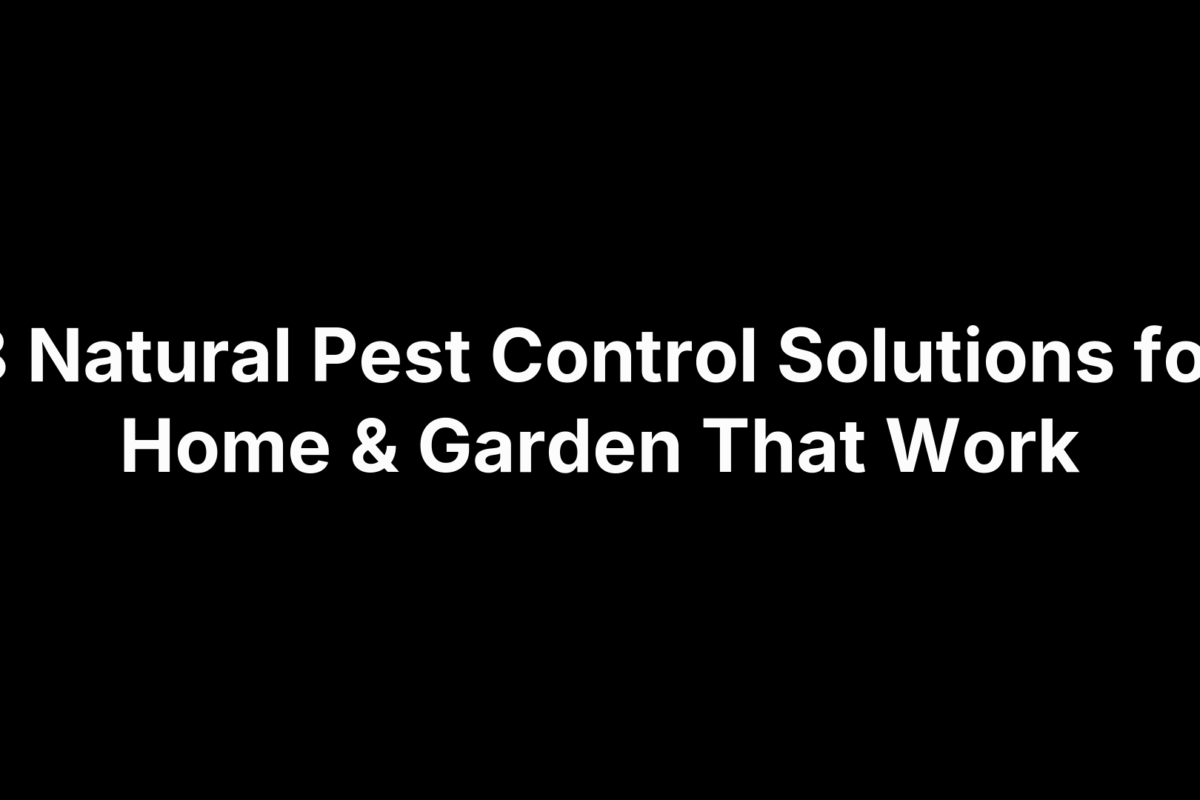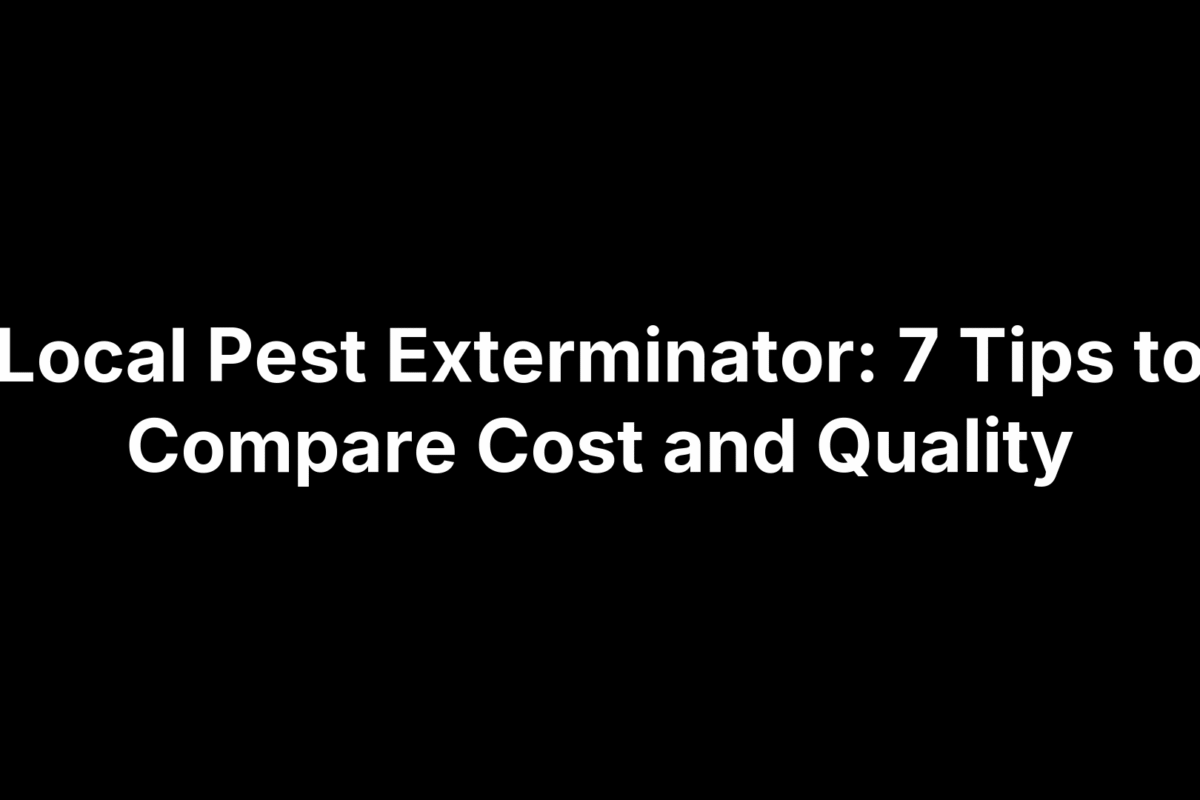Finding droppings in the pantry, hearing night scratches, or spotting gnawed cardboard doesn’t mean your home is dirty—it means rodents found what they’re always hunting: predictable food, reliable water, safe shelter, and an easy way in. Mice can slip through a hole the size of a dime; rats only need a quarter. Add a steady buffet of crumbs, leaky pipes, cozy insulation, or a bird feeder on the porch, and you’ve unknowingly rolled out a welcome mat.
This guide pinpoints the 10 most common lures that attract rodents to homes and yards—what each one looks like, why it pulls mice and rats in, and the exact steps to shut it down. You’ll get practical fixes you can do today, longer-term prevention that actually lasts, and when it’s worth bringing in a professional for inspection and exclusion. Ready to make your place less inviting and keep rodents out for good? Let’s start with the most overlooked attractant: skipping a thorough inspection and exclusion plan.
1. Skipping a professional inspection and exclusion plan (Redi Pest Control LLC)
Rodent problems rarely start in the kitchen—they start at the perimeter. When you skip a full inspection and exclusion plan, you leave the biggest question unanswered: what attracts rodents to your property and how are they getting in? Spot-treating with traps can mask activity, but it won’t stop fresh mice and rats from entering or nesting.
What it looks like
You clear droppings and set a few traps, activity dips for a week, then returns. That pattern signals missed entry points and ongoing attractants (food, water, shelter) nearby.
- Recurring signs: new droppings, fresh gnaw marks, baseboard smudges, or nighttime scratching after you’ve cleaned up.
- Seasonal flare-ups: infestations that restart every fall/winter as temperatures drop.
- Perimeter holes: burrow openings near foundations or sheds.
- “Hot zones”: garages, crawl spaces, and attics that were never fully inspected.
Why it attracts rodents
Without a systematic plan, the core lures stay put: accessible food (crumbs, unsealed pantry items, pet food, bird seed), water (leaks, standing water), and shelter (clutter, cardboard, insulation, quiet voids). Add dime- to quarter-sized gaps at doors, vents, and utility penetrations, and you’ve effectively posted a “vacancy” sign. Rodents are social, opportunistic, and will keep returning as long as entry and resources remain.
How to stop it
A professional inspection identifies every attractant and access point, then prioritizes fixes so you break the cycle instead of chasing it.
- Book a whole-home inspection (interior/exterior): Redi Pest Control LLC maps activity, entry routes, and rodent attractants.
- Seal access (“exclusion”): Install door sweeps; screen/cover vents; repair gaps around pipes and cables with steel wool plus sealant; use metal flashing or hardware cloth where needed.
- Harden food sources: Store pantry goods, pet food, and bird seed in airtight metal/glass containers; use lidded trash cans.
- Eliminate water: Repair leaks, dry damp cabinets, and empty standing water nightly.
- Reduce shelter: Declutter, swap cardboard for lidded totes, and correct insulation issues.
- Monitor and follow up: Targeted trapping/Stations, then re-inspection to verify no new activity.
A tailored inspection and exclusion plan transforms your home from “easy” to “off-limits,” removing what attracts rodents and shutting the door behind them—literally and figuratively.
2. Gaps, cracks, and open vents that act like doors
If you’re wondering what attracts rodents first, it’s effortless access. A mouse only needs a dime-sized opening and a rat about a quarter-sized gap to slip inside. Unsealed penetrations and unscreened vents are basically open doors to food, water, and shelter.
What it looks like
These openings often blend into the background until you look for light, drafts, or wear marks. Inside and out, concentrate on doors, windows, utility lines, and any vent that should close but doesn’t.
- Daylight under doors: Visible light at door bottoms or corners; worn thresholds or missing door sweeps.
- Utility gaps: Spaces around pipes, cables, and AC lines where caulk or collars have failed.
- Tired weatherstripping: Cracked, flattened, or missing seals on doors and windows.
- Damaged screens/vents: Torn window screens; dryer, attic, or crawlspace vents without covers or with stuck flaps.
- Siding and foundation cracks: Small separations near the sill plate, garage corners, or where additions meet the house.
Why it attracts rodents
Rodents are edge-runners that prefer dark, protected routes. Small structural openings let them move straight from outdoor cover into walls, attics, and kitchens without exposure. Once inside, they quickly find consistent resources—crumbs, pet food, water leaks—and return nightly along the same entry paths.
How to stop it
Sealing entry points is the highest-impact, lowest-cost way to shut down rodent traffic. Do a quick audit, then harden every pathway so new rodents can’t replace the ones you trap.
- Do a “lights-out” test: Darken rooms and look for light leaks; walk the exterior for gaps at doors, vents, and penetrations.
- Seal small gaps: Pack steel wool, then finish with caulk or foam to lock it in place.
- Repair bigger holes: Use sheet metal or metal wire mesh secured with screws; avoid materials rodents can chew.
- Fortify doors/windows: Add door sweeps, fix thresholds, and replace worn weatherstripping; mend or replace window screens.
- Secure vents: Install tight-fitting covers; screen attic/crawl vents and ensure dryer vent flaps open/close freely.
- Recheck seasonally: Temperature swings create new gaps—inspect each fall and after storms or renovations.
Closing these openings removes the easiest pathway—and one of the strongest lures—that brings rodents indoors.
3. Accessible food: unsealed pantry goods and kitchen crumbs
If you’re searching for what attracts rodents most inside, start in the pantry and on the countertops. Mice and rats are opportunistic eaters; a single box of cereal with a folded top, a film of grease on the stove, or a trail of crumbs under the toaster can feed them for weeks. They smell these easy calories and return nightly along the same routes.
What it looks like
Rodent food highways are built from tiny oversights—open packages, sticky surfaces, and “I’ll clean it later” moments. Look low (toe-kicks, under appliances) and high (pantry shelves) for telltale food access and residue.
- Open or clipped bags: Folded cereal, rice, or pasta bags; chip clips on thin plastic; torn bulk sacks.
- Cardboard packages: Cereal, oats, flour, and snacks still in boxes rodents can chew through.
- Counter crumbs and film: Toast crumbs, sugar sprinkles, and grease residue on ranges and counters.
- Spill zones: Sticky drips inside pantries; unvacuumed drawer crumbs; coffee grounds under machines.
- Under-appliance debris: Food bits beneath fridges, ovens, and dishwashers that never get swept.
- Unlidded trash: Kitchen cans without tight-fitting lids or overfilled liners.
Why it attracts rodents
Grains, seeds, fats, and sweets are prime rodent attractants—think cereal, oats, butter/grease, chocolate, and dried fruit. Even a few nightly crumbs meet their needs, so they don’t have to risk traveling far. Once a reliable food source is found, rodents imprint on the route and keep coming back until it’s removed or secured.
How to stop it
Cut off the buffet and you cut off the traffic. Make food hard to access, surfaces uninteresting, and smells unhelpful.
- Containerize dry goods: Transfer cereal, rice, oats, pasta, flour, and snacks into airtight glass, metal, or thick hard-plastic containers.
- Lock down sweets and fats: Store chocolate, dried fruit, nuts, and baking fats in sealed containers or the fridge; don’t leave grease on the stove or grill.
- Do a nightly reset: Wipe counters, sweep floors, and empty small crumb catchers (toaster trays, cutting boards).
- Seal the trash: Use a kitchen can with a tight lid; bag and take out food waste daily.
- Clean the “blind spots”: Monthly, pull out or lift the front grilles of appliances to vacuum crumbs and mop grease dust.
- Audit the pantry weekly: Toss torn packaging, wipe shelves, and label containers so bags don’t get reopened and left exposed.
Remove these easy calories and you remove one of the strongest reasons rodents choose your kitchen.
4. Pet food, bird seed, and bulk animal feed left unsecured
If you’re trying to pin down what attracts rodents fast, unsecured feed is near the top of the list. To a mouse or rat, kibble, bird seed, and grain are high-calorie jackpots they can smell from a distance. Left in bowls overnight, stored in chewable bags, or scattered beneath feeders, these foods turn garages, porches, and pantries into predictable feeding stations.
What it looks like
Rodents rarely miss a free meal, and unsecured feed creates a nightly route they’ll repeat until it’s gone.
- Overnight bowls: Dog or cat food left out after dark; gravity feeders that dispense 24/7.
- Chewable storage: Opened bags of dog food, bird seed, or chicken feed sitting on the floor or in cardboard/thin plastic.
- Spill trails: Kibble under shelves; seed and hull piles beneath feeders; “nibbled” corners on feed bags.
- Garage/porch stockpiles: Bulk feed stored outside the kitchen in areas that don’t get cleaned often.
Why it attracts rodents
Seeds, grains, fats, and proteins are prime rodent attractants. Pet food and bird seed offer concentrated calories with low risk—especially at night when bowls sit undisturbed. Bags are easy to gnaw, spilled seed under feeders is limitless, and consistent access trains rodents to return along the same path nightly, bringing them closer to entry points.
How to stop it
Cut off the easy calories and you cut off the traffic.
- Containerize bulk feed: Transfer pet food, bird seed, and animal feed to airtight metal or thick hard-plastic bins with tight-fitting lids.
- Elevate and isolate: Store bins off the floor and a bit away from walls; clean spills immediately.
- Change feeding habits: Feed pets at set times and pick up bowls within 30 minutes—no overnight food (or water) out.
- Bird-feeder hygiene: Use no-waste mixes or seed catch trays, place feeders away from the house and dense cover, and rake/sweep dropped seed regularly. Pause feeding during active infestations.
- Rotate and inspect: Don’t stockpile more feed than you can secure; check containers for chew marks and replace worn lids.
If activity continues after hardening food sources, pair these steps with exclusion and a professional inspection to remove the draw and stop new intruders from replacing the old ones.
5. Garbage and compost that aren’t rodent-proof
If you’re narrowing down what attracts rodents fastest, trash and compost rank high. Garbage is an excellent food source for rats and mice, and an open compost pile is basically a nightly buffet. Odors carry, bags tear, and flimsy lids turn your side yard or garage into a predictable feeding station.
What it looks like
Unsecured waste leaves a bread-crumb trail of calories and smells that rodents can follow back to your door.
- Overfilled cans/lids ajar: Loose or warped lids that don’t seal tight.
- Exposed bags: Kitchen garbage stored in the garage or on the porch without a can.
- Sticky, uncleaned bins: Food film, spills, and drips inside cans and on the ground.
- Open compost piles: Food scraps visible on top; no container or screen; easy digging access.
- Trash right against the house: Cans tucked against siding or entry points.
Why it attracts rodents
Rodents are opportunistic. Trash bags, food residue, and composted fruit/veg scraps deliver grains, fats, and sugars with minimal risk. Tightly sealed food elsewhere matters less if the bin outside leaks scent and access. Once rodents find consistent calories here, they stick around and explore for entry gaps.
How to stop it
Make waste and compost boring, sealed, and harder to reach.
- Use rodent-proof containers: Metal or heavy-duty bins with tightly fitting or latching lids.
- Bag and seal waste: Tie kitchen bags securely; avoid storing loose bags outside a can.
- Clean the area: Rinse bins and lids; scrub spills and sweep fallen scraps around cans.
- Position smartly: Keep bins slightly away from exterior walls and doors to reduce direct pathways.
- Compost correctly: Swap open piles for a closed compost container to limit access; keep fresh scraps covered inside the unit.
- Stay consistent: Don’t overfill; close lids every time and fix warped or broken covers promptly.
Locking down trash and switching to contained compost removes a major food source—eliminating one of the strongest lures that attracts rodents to your property.
6. Standing water and hidden leaks
If you’re still wondering what attracts rodents after sealing up food, look for water. Mice get much of their moisture from food, but readily available H2O—leaks, puddles, condensation, and overnight pet bowls—acts like a beacon. Damp, dark spots near plumbing or foundations give rodents safe access to water and, often, a hidden route into living spaces.
What it looks like
Water problems often hide where you don’t routinely look or clean. Trace musty odors, swollen wood, and discoloration back to a slow drip or pooling spot.
- Under-sink drips and damp cabinets: Sweating traps, loose supply lines, or weeping P-traps.
- Appliance seepage: Dishwashers, refrigerators (drip pans), and washing machines with occasional leaks.
- Basement/crawl humidity and puddles: Condensation on pipes, wet corners, or chronic dampness.
- Overnight pet bowls: Water left out all night next to an exterior door or garage entry.
- Clogged gutters/downspouts: Overflow that creates pooling near the foundation and low spots in soil.
- Outdoor standing water: Buckets, tarps, and poorly draining areas that hold water after rain.
Why it attracts rodents
Water is a core rodent attractant. Even though mice can survive on food moisture, easy, predictable water lowers their risk and keeps them close. Leaks and puddles typically occur in quiet, concealed zones—basements, crawl spaces, cabinets—so rodents can hydrate and forage with minimal exposure, reinforcing nightly travel routes.
How to stop it
Remove the water and you remove a major draw.
- Fix drips fast: Tighten fittings and repair leaks under sinks, around appliances, and in basements; check rooftop/chimney flashing after storms.
- Control condensation: Insulate cold water lines and dry damp cabinets; improve ventilation where moisture lingers.
- Dehumidify and drain: Run a dehumidifier in humid basements/crawls and ensure condensate lines drain properly.
- Put pet water away at night: Wash bowls daily and don’t leave water out after evening feedings.
- Clear gutters and extend downspouts: Direct water away from the foundation; regrade small low spots to prevent pooling.
- Dump standing water daily: Empty buckets, covers, and other catch-alls after rain.
Drying out these zones removes a key resource that attracts rodents and makes your home much harder to exploit.
7. Easy nesting materials: cardboard, paper, fabrics, and insulation
When people ask what attracts rodents after food and water, the next answer is simple: anything they can shred into a warm, hidden nest. Cardboard boxes, paper towels, tissues, old clothes, and even fiberglass insulation become cozy nurseries tucked along baseboards, in storage corners, and inside wall voids. Once a mouse finds soft, dry material near a quiet spot, it will return, build, and raise a litter—then repeat.
What it looks like
Nesting clues often show up where you stash rarely used items—attics, closets, basements, garages, and crawl spaces. Look for confetti-like shreds, balled fibers, and chewed openings on containers.
- Shredded paper/cardboard: Confetti pieces, chewed flaps, and small “nests” woven from packaging.
- Chewed fabrics/linens: Frayed edges on towels, blankets, seasonal clothes, and pet beds.
- Dryer lint balls: Softball-sized, loosely woven nests made from lint, tissues, or toilet paper.
- Insulation tunneling: Disturbed or “burrowed” fiberglass in walls, attics, or crawl spaces.
- Upholstery stuffing: Pulled fibers from stored cushions or outdoor furniture.
Why it attracts rodents
Soft, fibrous materials conserve heat, conceal scent, and hide pups in quiet, low-traffic areas. Fiberglass insulation is especially attractive because it’s warm, easy to burrow, and close to protected travel routes inside walls and ceilings—so mice and rats can nest within steps of food and water.
How to stop it
Make nest-building hard and storage areas unappealing. Remove or secure anything rodents can shred, and disturb quiet zones regularly.
- Swap cardboard for sealed totes: Use lidded plastic or metal bins for storage; label and close tightly.
- Store off the floor and away from walls: Keep paper goods and linens shelved and a bit separated from baseboards.
- Clear the clutter: Recycle delivery boxes quickly; avoid long-term piles of bags, paper, or fabric.
- Manage dryer lint: Clean the lint trap after every load and discard in a covered trash can.
- Check insulation: Inspect exposed insulation in attics/crawls; remove contaminated sections and address nearby entry points.
- Rotate and inspect: Move stored items quarterly to break up quiet, undisturbed nesting zones.
Limiting nest materials removes a major reason rodents linger—and, paired with exclusion and leak/food control, shuts down the cycle that attracts rodents in the first place.
8. Warm, quiet shelter in attics, crawl spaces, and wall voids
Food brings rodents close, but warm, undisturbed shelter keeps them. Attics, crawl spaces, and wall voids offer darkness, insulation, and low traffic—prime conditions for nesting and nighttime travel. If you’re still asking what attracts rodents after you’ve cleaned the kitchen, this hidden shelter is likely the missing piece.
What it looks like
These spaces hide activity because they’re seldom opened or cleaned. Follow sounds, odors, and disturbed insulation to find where rodents settle and move.
- Night scratches and scurrying: In ceilings, wall cavities, or floors.
- Musky odor/droppings: Strong smell in attics, eaves, or under floors.
- Insulation tunnels: Burrowed fiberglass; matted, dirty “runways.”
- Gnawed duct/pipe chases: Chew marks where lines pierce framing.
- Light gaps at vents/access: Torn gable/soffit or crawl vent screens; loose hatches.
Why it attracts rodents
Attics and crawl spaces are quiet, warm, and protected from predators. Insulation and stored items provide immediate nesting material; wiring, pipes, and ducts create discreet highways that connect shelter to kitchens and baths. Once a secure nest exists close to reliable food and water, rodents imprint on routes and return nightly.
How to stop it
Harden these zones so they’re sealed, disrupted, and regularly inspected—then pair with food and water control.
- Screen every vent: Install tight covers or 1/4-inch metal mesh on attic/crawl vents.
- Seal utility penetrations: Pack steel wool, then seal around pipes, wires, and chases.
- Weatherstrip access doors/hatches: Tighten, latch, and close gaps around pull-down stairs.
- Declutter and containerize: Remove cardboard; store in sealed totes off floor and walls.
- Repair and monitor insulation: Remove soiled sections, fix leaks, and place monitors/traps for follow-up.
Eliminating warm, quiet harborage removes a core reason rodents stick around—and forces any remaining activity into controlled, monitorable areas you can actually manage.
9. Yard cover and climbable bridges: wood piles, dense shrubs, and overhanging branches
Your yard can quietly supply everything mice and rats need to reach the house unseen. Stacked firewood, leaf piles, dense shrubs, ivy-covered walls, and low branches create cover and “bridges” straight to soffits, vents, and tiny roofline gaps—exactly what attracts rodents before they ever touch your doorstep.
What it looks like
Walk the perimeter with fresh eyes and look for concealed routes and hideouts that let rodents move edge-to-edge without crossing open ground.
- Firewood against the house: Stacks touching siding or fences; loose boards and leftover lumber.
- Leaf/brush piles and clutter: Yard bags, old furniture, or debris near the foundation.
- Ivy and dense shrubs on walls: Vegetation touching siding and climbing to the eaves.
- Low or overhanging branches: Limbs near the roofline, attic vents, or utility lines.
- Burrows near cover: Holes at the base of wood piles, sheds, or along foundations.
- Seed litter beneath shrubs/feeders: Accumulated hulls that keep rodents foraging nearby.
Why it attracts rodents
Cover plus elevation equals low-risk travel. Wood piles and dense vegetation provide shelter and nesting; overhanging limbs let rats leap to the roof and probe vents and gaps. Once they can commute under cover to warm, quiet entry points, they’ll return nightly to exploit food, water, and harborage indoors.
How to stop it
Turn your perimeter from a protected corridor into a clear, inspectable zone.
- Trim vegetation back: Keep plants at least 4 ft from walls and rooflines so rodents can’t leap to gaps.
- Create ground clearance: Maintain a 2‑ft clear buffer around the home—no shrubs, clutter, or stacked items.
- Elevate and relocate wood: Store firewood at least 18 in off the ground and about 1 ft away from walls; keep piles dry and tidy.
- Prune branches and remove ivy: Cut limbs away from the roof/eaves and strip ivy from siding to eliminate vertical highways.
- Clean up debris routinely: Rake leaves, remove brush piles, and haul off scrap lumber and junk near the foundation.
- Manage feeder fallout: Place feeders away from the house and rake up spilled seed frequently.
Clearing these outdoor “bridges” removes a major exterior lure that attracts rodents and makes any remaining entry points far harder to reach.
10. Gardens and fruit trees with unharvested produce and fallen fruit
If you’re still narrowing down what attracts rodents outdoors, look under your trees and through your beds. Unharvested fruits and vegetables—and especially fallen, overripe produce—are high-calorie beacons. Sweet scents travel, and the ground-level buffet lets mice and rats feed with little risk, night after night.
What it looks like
Garden and orchard “free food” tends to hide in plain sight, renewing daily as produce ripens and drops.
- Fruit litter under trees: Apples, citrus, berries, or stone fruit on the ground, often bruised or pecked.
- Overripe garden produce: Squash, tomatoes, corn, or beans left beyond harvest, split or soft.
- Peels in open piles: Kitchen scraps tossed on beds or in open compost.
- Mulch mats and dense groundcover: Thick, undisturbed areas under trees where fruit can collect unseen.
- Harvest staging outdoors: Boxes of picked produce left on porches or in garages overnight.
Why it attracts rodents
Fruits, berries, and garden crops deliver sugars, starches, and seeds—prime rodent attractants. Dropped produce concentrates scent at ground level, and dense mulch offers cover while feeding. Irrigation adds dependable moisture nearby, so rodents can eat and hydrate within a few feet of concealment.
How to stop it
Turn your garden from a nightly buffet into a clean, low-reward zone.
- Harvest on schedule: Pick ripe produce promptly; don’t let crops linger past maturity.
- Police the drops daily: Collect fallen fruit each afternoon; don’t leave “windfalls” overnight.
- Containerize scraps: Put trimmings and peels in a closed compost container, not an open pile.
- Thin cover beneath trees: Rake mulch lightly and keep the area clear so drops are visible and removed.
- Adjust watering timing: Water earlier in the day so soil isn’t freshly wet at night.
- Store harvest indoors: Bring picked produce inside; avoid overnight storage on porches or in garages.
By removing fallen fruit, tightening harvest habits, and using closed compost, you eliminate a major exterior food source—one of the strongest lures that attracts rodents to yards and right up to the house.
Keep rodents away
Rodents follow a simple formula: easy entry + easy calories + easy water + quiet shelter. Remove those lures and close their pathways, and you break their nightly routes for good. The fixes above aren’t flashy, but consistency wins—especially at doors and vents, around trash and compost, and anywhere you store food or nesting materials.
- Seal openings: Pack steel wool, then seal dime–quarter gaps tight.
- Containerize food: Pantry, pet, and bird feed in airtight bins.
- Lock down waste: Latching trash cans and closed compost; clean spills.
- Dry it out: Fix leaks; no overnight pet water; manage humidity.
- Deny nests: Swap cardboard for totes; trim vegetation; elevate wood.
Ready to stop the cycle? If you’re hearing scratches, seeing fresh droppings, or want a preventive plan, book a professional inspection and exclusion with Redi Pest Control to harden your home and keep it rodent-free—season after season.
